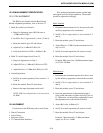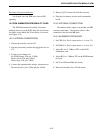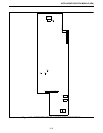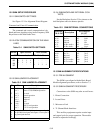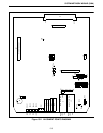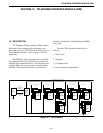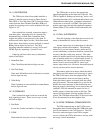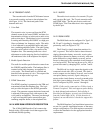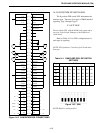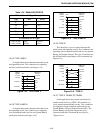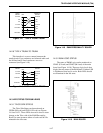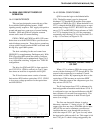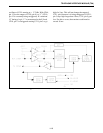
TELEPHONE INTERFACE MODULE (TIM)
14-2
14.1.1 SUPERVISION
The TIM can be seized from either landside or
internal. Landside seizure occurs by Direct Inward
Dial (DID) or Two-Way Start (2WY). Internal seizure
comes from the Intra-Terminal Data Bus (IDB) as a
request for outgoing service on the telephone line (see
Figure 14-15).
Once seizure has occurred, connection supervi-
sion takes place. Incoming calls are connected by
Immediate Start or Wink Start. Immediate Start
requires the ability to accept digits in less than 70
milliseconds before digits are sent. Wink Start sends
digits after a short battery reversal and back to normal
Battery before digits are received. Two-Way
Incoming indicates readiness to accept "end-to-end"
DTMF digits by outputting a "proceed" tone.
Outgoing calls have three ways to determine
when to send digits:
1. Immediate Start
Waits 70 milliseconds before digits are sent.
2. Dial Tone Delay
Waits until 100 milliseconds of dial tone is received
before digits are sent
3. Wink Delay
Waits for battery reversal and back to normal battery
before digits are sent.
14.1.2 SIGNALING
Once connection supervision has occurred, the
digit signaling is done. There are two ways to send
and receive digits:
1. Dial Pulse
Counts the "breaks and makes" of loop current.
2. DTMF
Determines the tone pair of a set of frequencies.
The TIM sends or receives the appropriate
signaling depending on the direction of the call. The
TIM is capable of sending and receiving "end-to- end"
signaling where the call is completed and normal voice
communication takes place, or numeric information
can be sent or received via DTMF. Dial pulse infor-
mation cannot pass through the telephone company's
Central Office (CO) to make it back and forth to the
units.
14.1.3 CALL SUPERVISION
Once the signaling of the digits has occurred, call
status is determined for answer and disconnect.
Answer supervision is an indication of when the
called party answers the telephone. The preferred
method is by reverse battery answer, where the CO
reverses the battery connection, therefore, current flow
reverses when the called party answers. The other
method is mobile speech activity that detects the pres-
ence of mobile speech for a certain length of time. If
the telephone line cannot recognize reverse battery
answer, none is sent toward the CO, and no real
answer supervision exits. However, the mobile speech
activity can be used for answer detection.
Disconnect supervision detects when the called
party hangs-up (disconnects) and a message is sent to
the TIM to disconnect from the telephone line. The
preferred method is from reverse battery answer,
where the battery returns to normal when the called
party disconnects. The next method is to wait for the
mobile disconnect message. If the mobile does not
hang up properly, the message is not sent and the call
continues. Fail-safe alternatives watch for loss of
mobile speech or detect the return of dial tone. This
ensures call disconnect allowing another call to be
placed. The TIM then informs the Call Processor that
it has disconnected from the telephone line.
14.1.4 INTRA-TERMINAL COMMUNICATION
The TIM communicates to the Call Processor
through the Intra-Terminal Data Bus (IDB) and sends
activity information to the Call Processor. The Call
Processor sends messages to the TIM to request
service, informs the TIM to disconnect, and any other
necessary control information.



